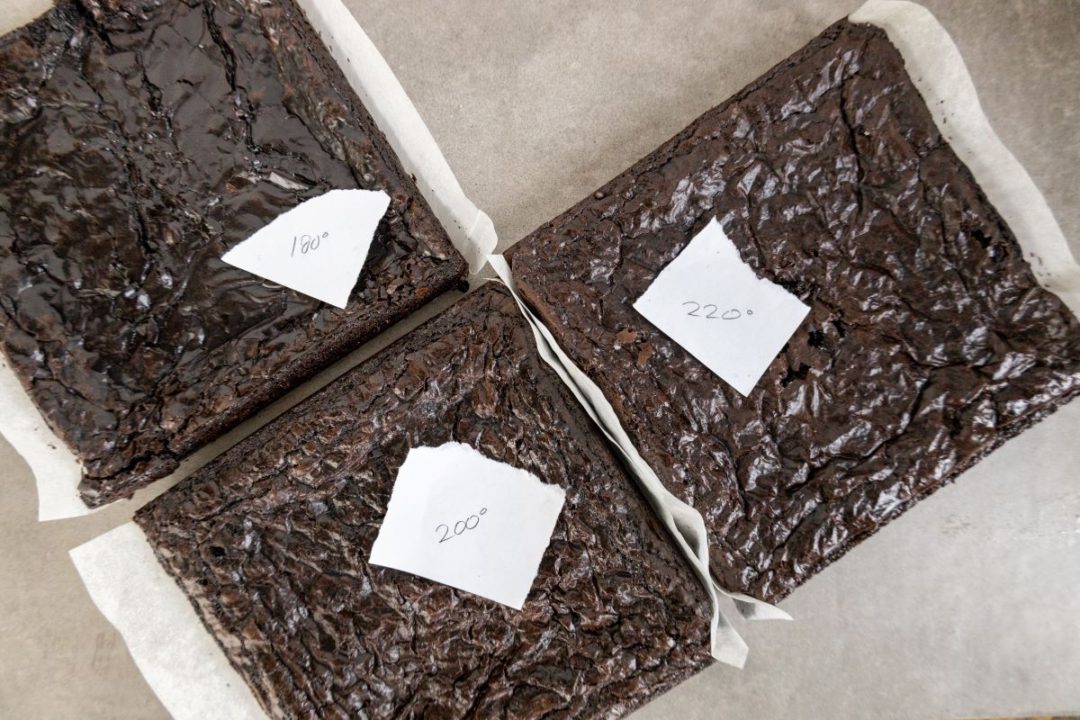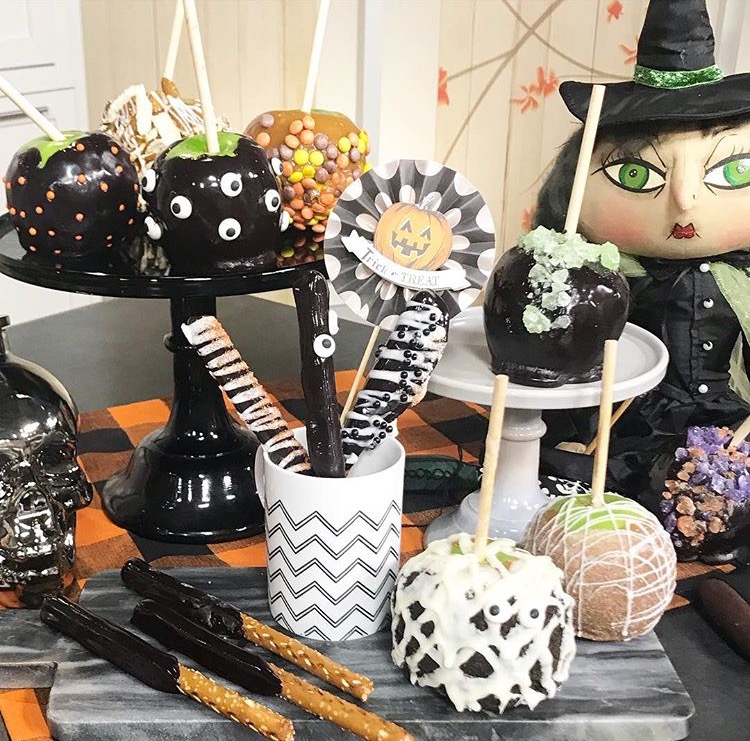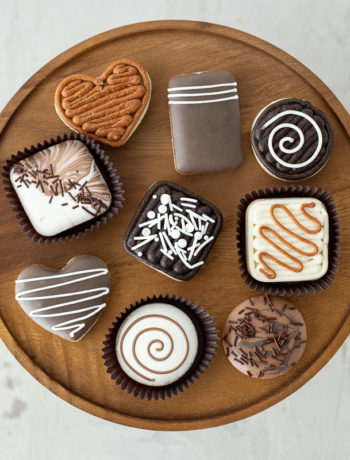On our journey with brownies, we have been getting a lot of questions about how to get the best fudgy brownie, cakey brownie, or chewy brownie. And while the ingredients and method do play some part in the texture, ultimately the most important thing might just be the brownie temperatures. Because even with a higher fat percentage, cooking anything for longer and to a higher temperature will eventually dry it out, solidify it, and crisp it up. So what temperature should you bake your brownies? We are here to find out.
While preparing for our Brownie Bake-Off we did a lot of reading about how long to bake brownies, and the results were all over the map. So we moved on to researching internal temperatures, and even then we found some resources saying they baked brownies to as low as 165℉ and some as high as 250℉. This makes some sense because there is such a wide range of recipes and ingredients. But still, how on earth are you supposed to know how to make your perfect brownies with such a huge variance in times and temperatures? So we decided to do some testing of our own, exclusively on brownie temperatures.
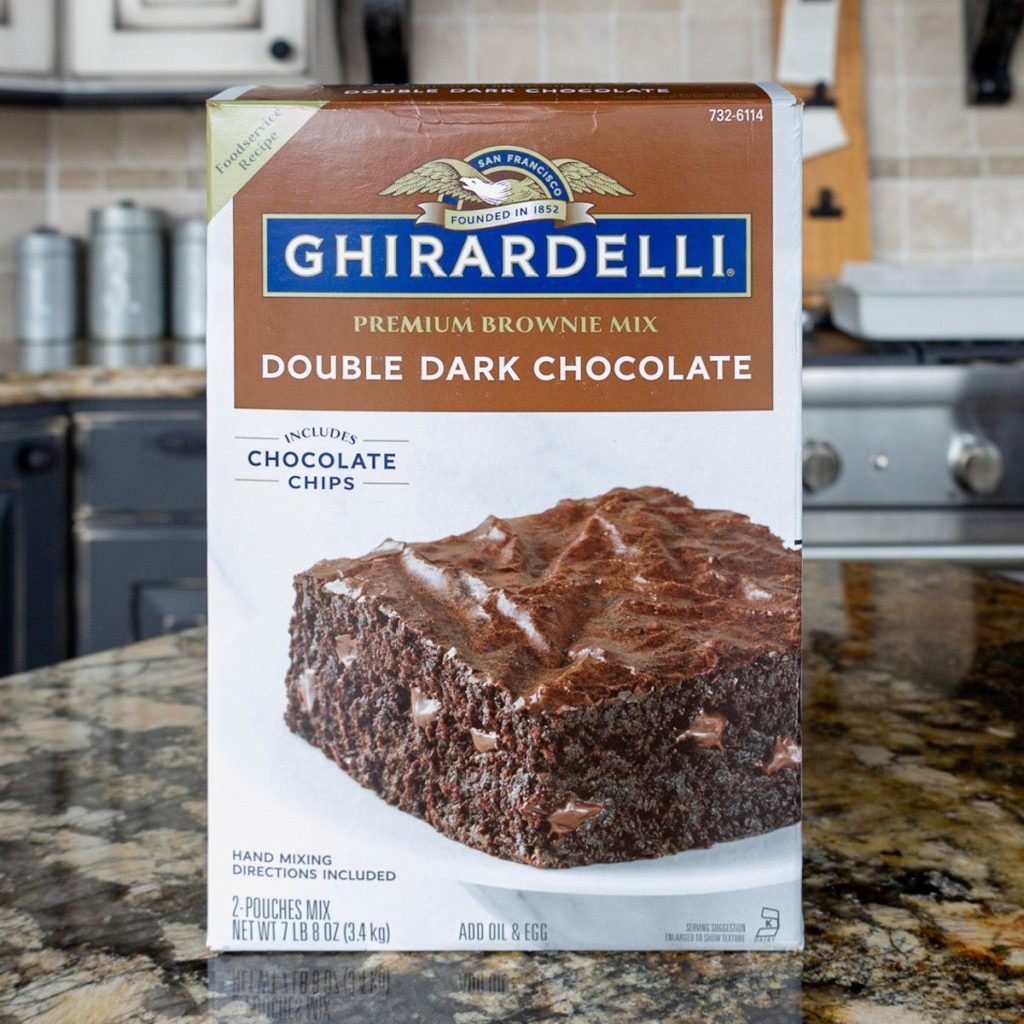
In the test kitchen, we used Ghirardelli Double Dark Brownie Mix and we put the exact same amount of batter in three separate pans. But instead of following the instructions on the box and baking to time, we went to certain internal temperatures. We tried to pick three temperature differentials with enough range to give us some distinct differences in texture, but not render our brownie batters completely inedible.
And once we were ready for baking, we used a Thermoworks Chef Alarm to alert us for the lowest temperature brownies. And then we checked on the remaining brownie temperatures with a Thermapen ONE probe thermometer every five minutes until they came up to temperature (our last batter took almost 20 extra minutes). And here are the results:
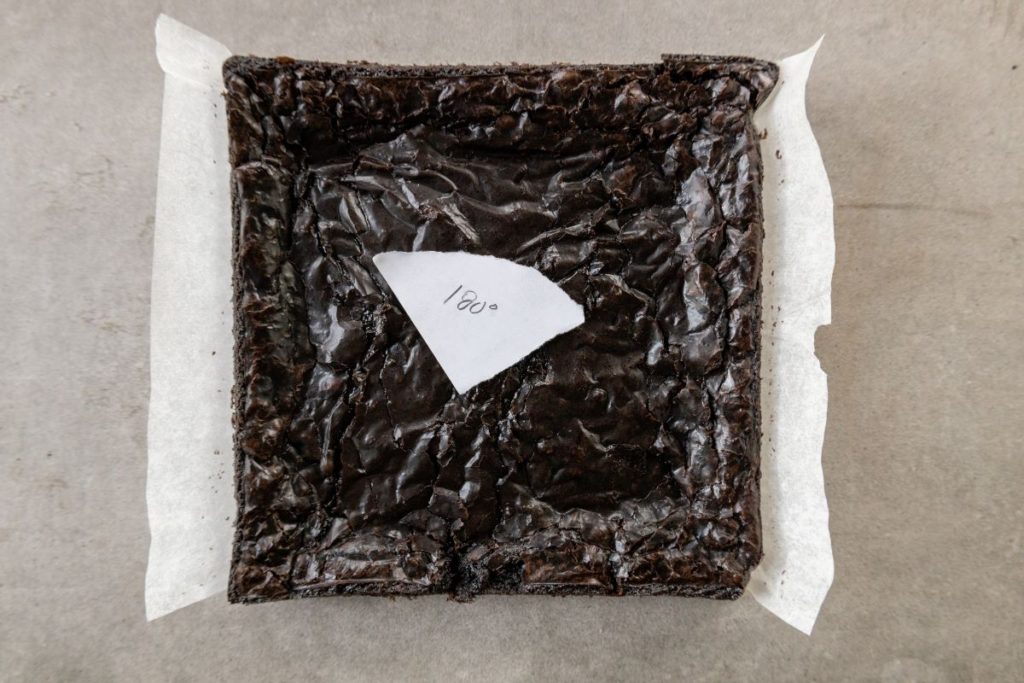
Brownies Cooked to 180℉
These brownies came out real gooey and they were definitely under baked. Our resident culinary student almost wouldn’t even touch them, she was so determined that they were raw. And even after resting for a while, these brownies were simply too wet to cut and not at all like a brownie you could grab and eat. You could maybe spoon them into a bowl with some ice cream, but that is about it. And with these results, we can confirm that cooking to anything less than 180℉ for brownies is not advisable. It would have been way too soupy.
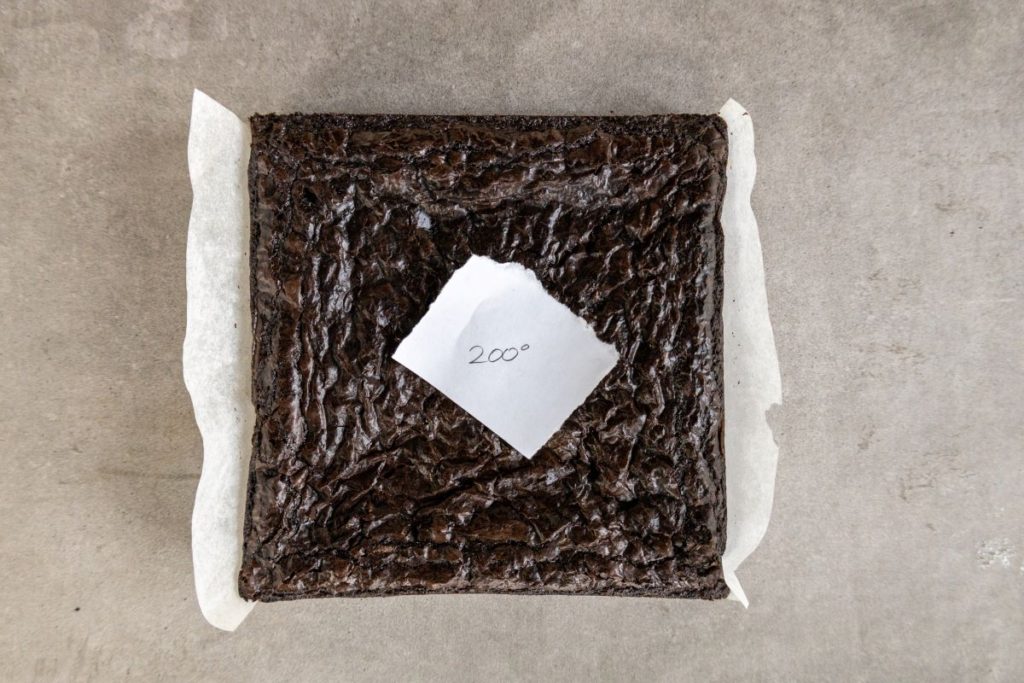
Brownies Cooked to 200℉
We are pleased to announce this next batch of brownies actually baked all the way through. The chewy parts of the edge pieces were pretty small and the middle was plenty fudgy. And while the middle was very soft, we were still able to cut into these brownies without them oozing off the spatula. If you are team fudgy brownie, this internal temperature is probably the ideal place to start.
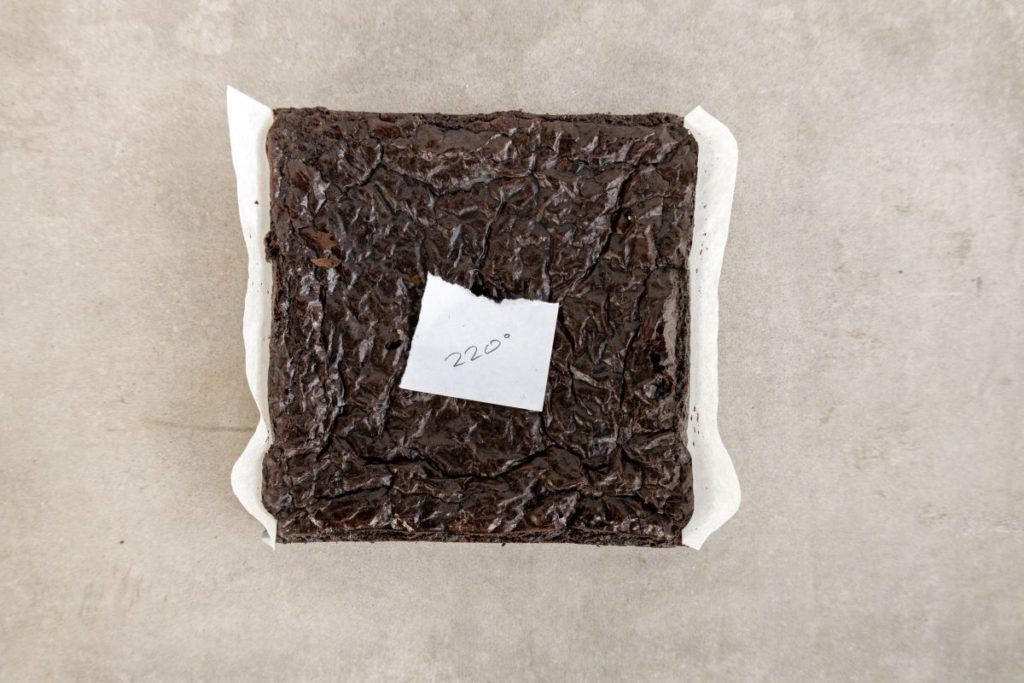
Brownies Cooked to 220℉
These brownies baked the longest and came out with more solidity after resting and cooling. The edge pieces were decently chewy, but we were surprised that nothing was really crispy. And there was still plenty of fudgy texture left in the middle. In fact, we could probably have cooked these to an even higher temperature and still had a delicious result.
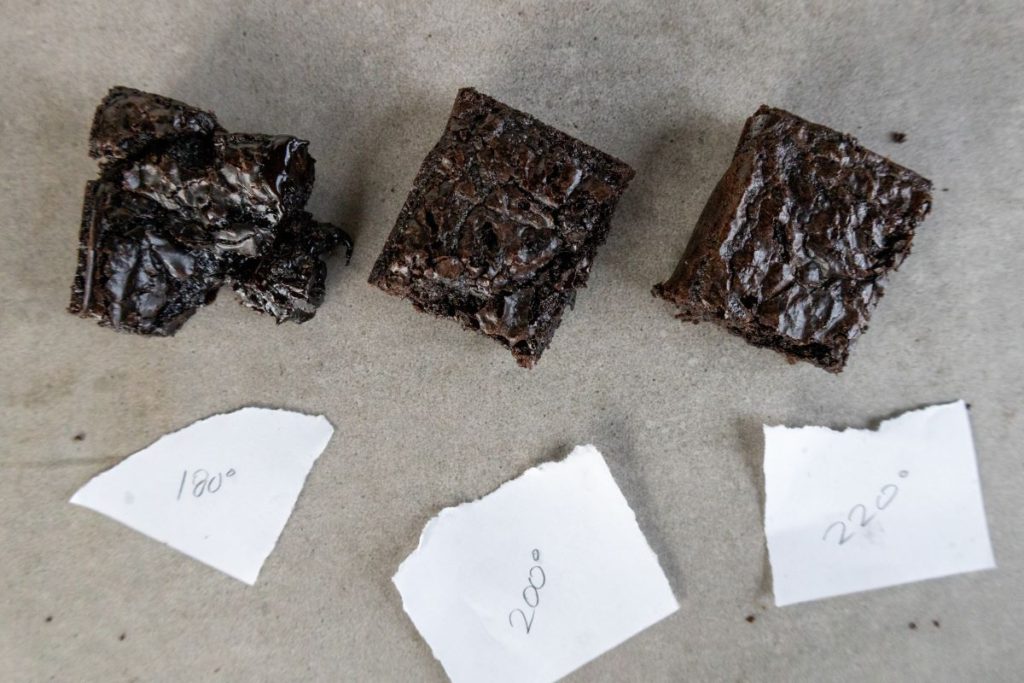
There are several ways to tell if brownies are done. You can try using your finger to test the firmness of the top but are at risk of burning yourself. Or you can use a toothpick to see if it comes away clean. But what happens if you stab right through the middle of a melty chocolate chip? We have found that the most reliable way to tell when brownies (or any baked goods for that matter) are done is with a thermometer. And it is one of the best ways to get your desired results every, single, time. So whether you are team fudgy or team cakey, you absolutely need to be team thermometer all the way. It is the best way to test brownie temperatures. Shop our selection of thermometers and you are ready to get baking.

